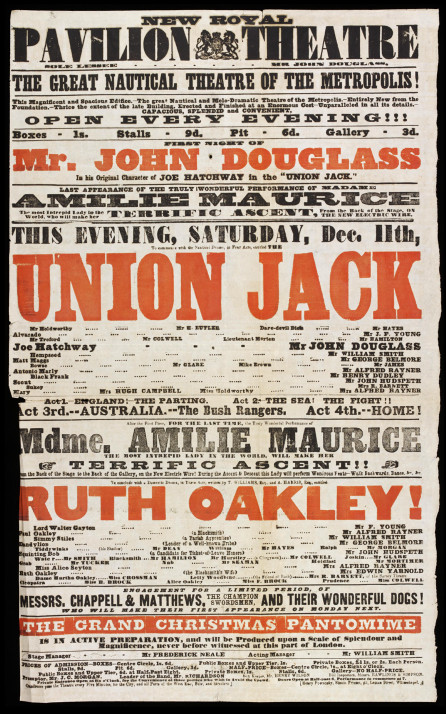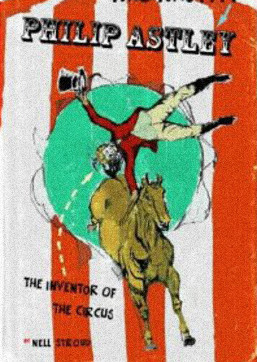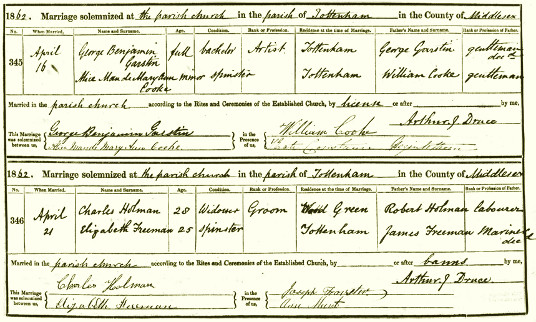1857
- Ruth Oakley, at St. James’s Theatre in London. An original domestic drama in three acts.
- A concert at The Strand Theatre in London after the farce Stolen Kiss. Ran for one night only. Described as ‘a grand combination of talent’.
- Marrianne de Lancy, at St. James’s Theatre in London.

George joined Mr Leigh Murray’s Dramatic Company.
- A Review with Mr Leigh Murray’s Dramatic Company, at Royal Queen’s Theatre and Queen’s Hall in Hull, the various ‘Theatre Royal’s in Nottingham, Bristol, Worcester and Bath, and Queen’s Theatre in Manchester.
These plays were all performed at the Royal Surrey Theatre on Blackfriars Bridge Road in London, still with Mr Leigh Murray’s Dramatic Company:
- Ambition, or The Throne and the Tomb.
- The Wife’s Revenge.
- India 1857.
- Wellington Figs.
- The Honeymoon.
- The Barrister.
- Queen Mab, or Harlequin/Romeo & Juliet.
After this, still during a prolific year, George Belmore left Leigh Murray’s group.
- The Creole, or Love’s Fetters, at Marylebone Theatre Royal.
1858
- Ruth Oakley at Royal Surrey Theatre.
- The Poor Needlewoman of London, at Marylebone Theatre Royal. On the 23rd of May this was the show performed when the theatre, managed by J. Cave, was re-opened.

Also at Marylebone Theatre Royal in 1858:
- The King’s Fool.
- Richard the Third, which featured stage effects by Astley’s, a circus company and venue proprietor.
- The Sailor’s Home.
- The Union Jack & The Jewess.
- Handy, Pandy, Sugar and Candy. Publicised as ‘Immense success of the grand Christmas pantomime. Beautiful Scenery, Magnificent Tricks, Splendid Dresses, Gorgeous Transformation Scene, and Double Company of Pantomimists. The performances will commence with an original elaboration of the Great Moral Axiom that “Fun is the light of life,’ illustrated by, compounded in, and amalgamated with a superb collection of ancient identities, modern realities, eccentric whimsicalities, jocose technicalities, and mirth-exciting comicalities, collected from all localities, and calculated to win the favour and partiality of those who love grandeur, fun and Frolic to perpetuality, entitled HANDY, PANDY, SUGAR AND CANDY – WHICH HAND WILL YOU HAVE? Or, Harlequin Orpheus and the Magic Lute.’
George Belmore also did nine performances in Exeter, Devonshire.
1859
- Fifteen Years of a Sailors Life, at Marylebone Theatre Royal, London.
- A show in Bury, near Manchester, during later October.
At the very end of 1859, going into 1860, George Belmore worked with William Cooke, the proprietor of the successful and long running Cooke’s Circus that had previously been ran by William’s grandfather and father, Thomas Cooke and Thomas Taplin Cooke respectively. Dramatic and epic plays were produced with the resources and stunts possible with circus performers in an appropriate venue, such as Astley’s Amphitheatre on the south side of Westminster Bridge.

1860
- Garibaldi, and The Day After the Fair, at Astley’s Theatre while it is leased by William Cooke.
On April 10th George performs in The History of the Flag, at Astley’s Theatre, where he is the principal performer and plays alongside Alice Maude Mary Ann Cooke, a circus performer and daughter of William Cooke. It is said that George first became aware of Alice as she was riding a chariot around the amphitheatre as a charioteer, while George was dressed in a Roman costume telling the story of epic historical events.
- Fair Rosamond / The Amazon Crusader, at Astley’s Theatre.
- Mazeppa, at Astley’s Theatre.
- The Union Jack & The Jewess, at Marylebone Theatre Royal.
George Belmore became part of Mr George Vining’s theatre company for a couple of years, starting in December 1960. All of their shows are at St. James’s Royal Theatre in the West End of London.
- Smack for Smack.
- Handy, Pandy, Sugar and Candy.
1861
- Perseus & Andromeda or, The Maid and the Monster, an original classical extravaganza written by W. Brough, where George Belmore played Perseus, King of Ethiopia. Followed by a farce in one act by W. Bayle Bernard called The Boarding School.
- Law for Ladies, a ‘comedietta’ in one act by Mr. Alfred Wigan. Followed by A Scrap of Paper, a new comedy in three acts.
- The Pasha of Pimlico, a ‘Little Eastern Farcial Extravaganza by J. M. Morton Esq.’.
- Stage Struck, a farce.
- Jacket of Blue.
- A Scrap of Paper, a new comedy in three acts.
- The Poor Nobleman / The Boarding School.
- Raising the Wind, a farce.
In 1862, on the 16th of April, George Belmore married circus performer Alice Maud Mary Ann Cooke, daughter of circus and Astley’s Amphitheatre proprietor William Cooke. This took place at All Hallows Church, Tottenham. At this point in time, George was 31 years old, and Alice was about 17 (precise birth date not known). Alice’s sister Kate Constance Cooke witnessed the marriage.

- Self Made, a new drama adapted from French by George Vining, followed by The Boarding School.
- Friends or Foes, an adaption by Mr. Wigan of a French comedy called Nos Intimes.
- The Boarding School.
- Prince Amabel! Or, The Fairy Roses, a ‘Fairy Extravaganza’ written by William Brough.
- Still Waters Run Deep, a comedy by Tom Taylor. Followed by The Fairy Roses.
- His Last Victory, an original comedy in two acts by Watts Phillipes, followed by The Fairy Roses.
- Bristol Diamonds, a new farce by John Oxenford based on La Femme Doit Suivre Son Mari.
- Bristol Diamonds / Endymion / A Return Ticket (To the International Exhibition). A Return Ticket is publicised as ‘an entirely new piece de circonstance by Messrs. G. Spencer and W. James’.
- She Would and She Wouldn’t, a new comedy in two acts by J. Maddison Morton.
- Endymion or, the Naughty Boy who Cried for the Moon, a ‘revived original classical mythological extravaganza’ by William Brough.
- A Return Ticket.
